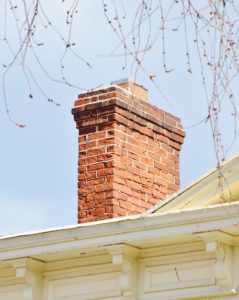Identifying Chimney Discoloration
What do your fingernails and chimney have in common? A trained professional can gain insight as to your health and that of your chimney by looking at their appearance. Changes in color and texture indicate the need for further attention. Look at your fingernails, if you see any of these symptoms, be sure to consult your physician. When it comes to discoloration of your chimney it may not be so easy to inspect. That’s why homeowners in the Long Island area call chimney professional Chief Chimney Services to look for any chimney discoloration and identify the cause and solution to prevent damage.
You may not be able to see the discoloration on your chimney from the ground and the last thing an untrained homeowner needs to do is start climbing around on their roof. (Ladder accidents are one of the major causes injuries especially from folks who swore they’d be careful. Maintaining your safety and the health of your chimney are two of the reasons you call a chimney professional once a year for a thorough inspection and cleaning.) Simply washing the stains away without tending to the underlying causes puts you and your home at risk.
Discoloration on chimneys can be white, black, brown, green, or red depending on the cause.
White stains are caused by evaporated water. When you see the white powder or crystals it is an alert that further investigation is needed. The white substance, efflorescence, can be just simple evaporation from rain, snow, and ice. However, efflorescence can also be a sign that water is running inside your chimney or flue and you have a problem. The website InspectAPedia cautions, “Although efflorescence is not mold, it often indicates wet conditions that cause problem mold growth elsewhere in the same building. You’ll need to identify the sources of moisture or leaks and correct them, and depending on other building air quality complaints or health concerns it may be appropriate to inspect and screen the building for problem mold or other moisture or water-related problems. Efflorescence is always a cause for professional attention.”
Green, blueish, and black stains send out a loud SOS to have your chimney professional check for algae growth and or mold. Both thrive on moisture and cause serious health and infestation issues which are expensive to correct. It is imperative that water leaks are caught early, identified, and cured to prevent mold.
Rust colored stains are also the result of water leaks and the source must be identified and corrected.
Black and brown stains can appear on your chimney, roof, and on sides of your home; dark stains have a variety of root causes. These stains can be caused by clogged gutters, leaks and cracks in your masonry or actual chimney flue, or a missing, dislodged or no rain cap. None of which can be diagnosed from a ground level inspection. Black and brown stains can also mean you have a very serious health and safety issue that require immediate attention if the dark stains are the result of creosote and soot. Creosote and soot are highly combustible and may be the result of malfunctioning heating appliances. Dark stains can also indicate a fire occurred that you weren’t aware happened.
Take Away: No matter what color they are, stains on your home are not simply a cosmetic issue. Stains send a message that something needs the attention of a trained chimney professional before you jeopardize your health, safety, the integrity of your structure. Like most things in life, the longer the problem is left unattended, the more complicated and costly the cure becomes. If you live in Long Island, call Chief Chimney Services for help. If not, be sure you contact a chimney professional with strong credentials ASAP.
